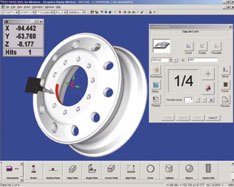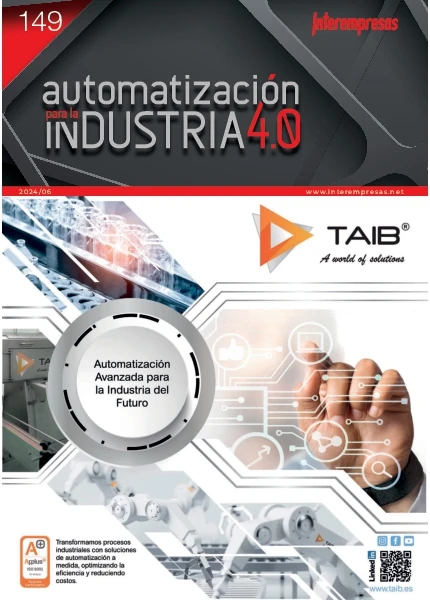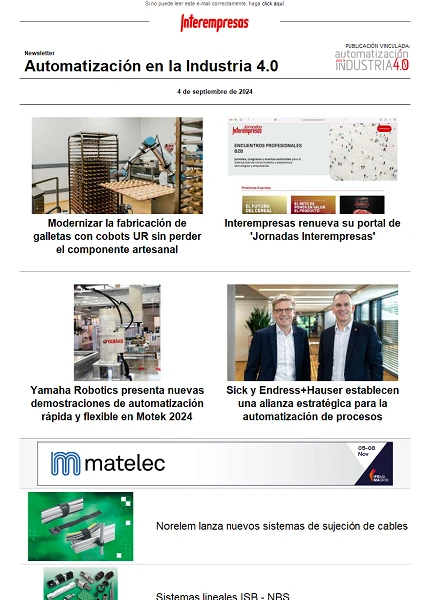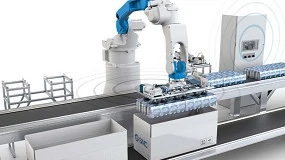Section carried out with the technical advice of DEA Hexagon Metrology
Efficiency and accuracy in inspection through a direct connection to CAD systems
By JIU, operators can simulate parts measurement programmes using a model of the piece be downloaded of the CAD system.
The performance improvement
Program measurement machines by coordinates (MMC) with the imported systems data CAD is becoming a common practice. The advantages of transferring the CAD data to the MMC for the measurement are improving the efficiency of the programming and the performance of the system of measurement. The use of data from the CAD also eliminates some errors in the operator associated with the programming of MMC without CAD as well as allowing schedule the MMC of a mode offline, without having the piece or be connected to the machine of measure.
However, as all the improvements, the import of CAD data also has some limitations. The passing of data from CAD systems can lead to mistakes, even if they are small. The problem is due to a poor translation of the CAD model. The most common manifestation of this problem are clear separations between the surfaces and surfaces appearing with multiple layers. There are also errors which we cannot see but which exist in the translated data. Often the CAD data already have been translated into several CAD systems before that they result from the software of the MMC. This can create errors according to the number of times that has been translated. Modern CAD systems use complex mathematical algorithms to define surfaces.
Because every developer of CAD systems has designed quick and competitive own routines and individuals to define and determine mathematically the different parts that make up the entire model, common translators are not capable of withstanding all varieties of algorithms and CAD modules. After a translation of the CAD system and an import from the measurement software we do not have any method to check the lost data.
Another aspect to the CAD data measurement machine software is the ability to withstand other CAD modules. Design work can be carried out in small parts and have assembled after. In the context of current global communication skills, several designers can save parts of the final design independently to join them as a single piece.
Because the CAD system only saves parties in your original file, it is impossible to read without a structure of its own CAD database. Future modules means another improvement of CAD systems that will make that translators are left behind.
There are several methods to make a link of CAD data with measurement systems. Recently, Hexagon Metrology, S.A. has developed a new method called Direct CAD Interface (DCI) as one of the characteristics of its inspection and measuring PC-DMIS software.
Make a CAD to the MMC
Today, there are several methods to make a link of CAD data with measurement systems. Recently, Hexagon Metrology, S.A. has developed a new method called Direct CAD Interface (DCI) as one of the characteristics of its inspection and measuring PC-DMIS software. The JIU method can be installed both on new machines or on machines of other manufacturers of MMC. The direct CAD interface is available for programs like Catia, Pro/Engineer, Unigraphics, SDRC and common CAD, ACIS format. It eliminates the need for software to translate the original CAD model, ensuring that accurate data of the design are used to programming pieces. DCI allows users to use the accuracy of the data of the original design to create programmes of inspection complete off-line with MMC graphics, models of parts and fixations and simulations of the trajectory of the sensor, reducing programming time and improving accuracy.
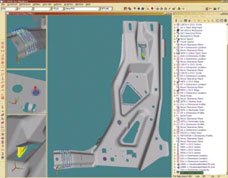
JIU offers a method to download the form of complex parts, allowing to carry out programmes of pieces.
The open architecture of PC-DMIS uses the functionality of input to the internal architecture of the CAD system. The most important aspect is access to the mathematical routines along with the complex surfaces of CAD, offering 100% confidence in the integrity of data used in the measurement. DCI has broad application, from simple pieces to complex surfaces outlined as the pieces of sheet metal assemblies. To evaluate the benefits of JIU, it is important to understand how other methods of transfer of CAD data and what are its limitations.
A very common method is the translation of the model, taken from an original file CAD, the language of the common format such as Iges through an internal converter of the CAD system. The IGS format file is then passed to software of measurement which has its own internal converter to translate the common format again into the internal language of measurement software.
This is the most common method of importing CAD data and supports the majority of measuring software packages. It is a low cost solution and is ideal for the measurement of simple pieces. However, as there is a double translation, this method may produce errors of translation. The incompatibilities between translators may reduce the efficiency of the operation.
The open architecture of PC-DMIS uses the functionality of input to the internal architecture of the CAD system.
Another method is the translation of the original CAD file to the Iges format through an internal converter. This common format IGS file is passed to the software of measurement using the common format as its own internal language. Since this method read the original files to the system of measuring software, believed that it is a pure import of CAD data. It is not the case. The system of measuring software converts this file open either or, with a hidden attachment translator, makes its own inner language, so they have yet to translate the data. During translation, imprecision can occur. A third method uses the central module of the operating system CAD as the core module of the operating system of software measurement, directly reading files stored in the CAD system. There is no translation, since both CAD and the MMC are using the same original format. This option also allows the user of the MMC to read an original CAD file in the software of the MMC uses the same core module to CAD. The advantage is that you there is no translation because the two software packages use a common engine. The major disadvantage of this option is that the central module of the operating system is only the basic engine, and that the majority of CAD systems now use multiple modules even for basic operation, the central module of the operating system no longer supports these activities todaythe manufacturers need a confidence of the 100 in measurement operations. The use of CAD data in metrology applications delivers improvements in performance and production, but there is a lack of precision when the CAD data are translated to the metrological use. Although these errors are end, small beer, the tolerances in the manufacturing of products requires a translation error-free. The direct CAD interface offers the use of CAD data without translation to an enhanced inspection efficiency and accuracy.
Related Companies or Entities
Hexagon Manufacturing Intelligence
